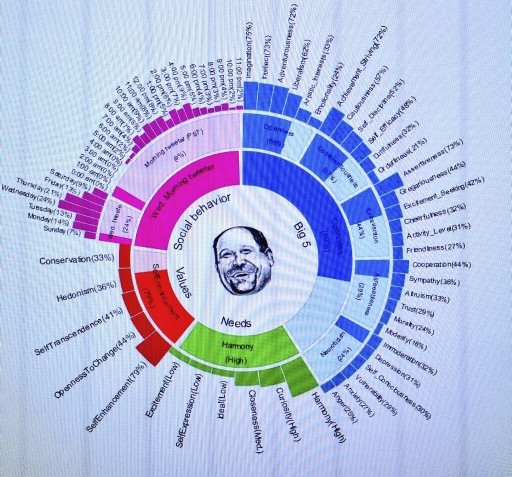Think about how you share, why you share and what you shared for the last month. We all share things differently because we see things differently through our own eyes. We perceive ourselves one way and too often are seen by others differently. It’s always been a mission of brands to understand their voice and values and align it with how they talk to their audience to build rapport – this is the sweet spot we’ve all been trying to reach as marketers. For some time now, I’ve been talking about “social body language”, which is the collective language of what, how and who we share our content online. When you analyze your own social body language as an individual or a brand, you gain context about the types of subjects and people that are important enough to you to share.

I just got back from SXSW, and like always, delivered great friends, conversation, drinks and ideas. But the most exciting things to me were the emerging innovations starting to peek out of ‘big data’. We’ve been talking about it for a long time, but I think technologies and marketers are finally starting to figure out how to make the aggregation and analysis of data simplistic enough to actually mean something to its consumers.
One day there, I walked into The CMO Clubhouse just before an interview, and was drawn to the IBM engagement social command center they had on display. I was familiar with a good part of the command center, but one screen in particular caught my eye. As I took a closer look, I immediately could imagine the possibilities for where the social web was heading. IBM Social Business, using their own social software called “System U” has figured out how to visually analyze and categorize into personality traits the entire body of an individual Tweet account. I stood there and digested my own social persona, my own social behavior, values and needs. According to the analysis, I share more frequently on Wednesday morning at 11:00 am over any other day or time. It told me I was someone who is giving, open and extroverted, with a high level of harmony. These traits resonated with me because I could actually see how the outside world might perceive me in my own social body language. As a marketer, I started to realize how this could alter the way companies might speak to me. Would they have more success reaching me if they knew I was online Wednesday mornings at 11:00 am? If they phrased a Tweet to me using words like “We know you’re open to new opportunities…” or “Our crowd has been waiting for you…”, would I be more likely to engage because my own personality traits aligned with their language to me?
It’s not yet perfect, and technology like this that can get to this level of granularity could quickly go to the dark side. But I hope brands start adopting this sort of technology faster, because I’m tired of getting ads served to me that have nothing to do with my interests.
KEY TAKEAWAY: We’re moving into the era of social context. Technology will get us there very soon to deliver personalized and individualized experiences between humans and brand marketers, delivering real time opportunities to speak human to human, as it should be.





